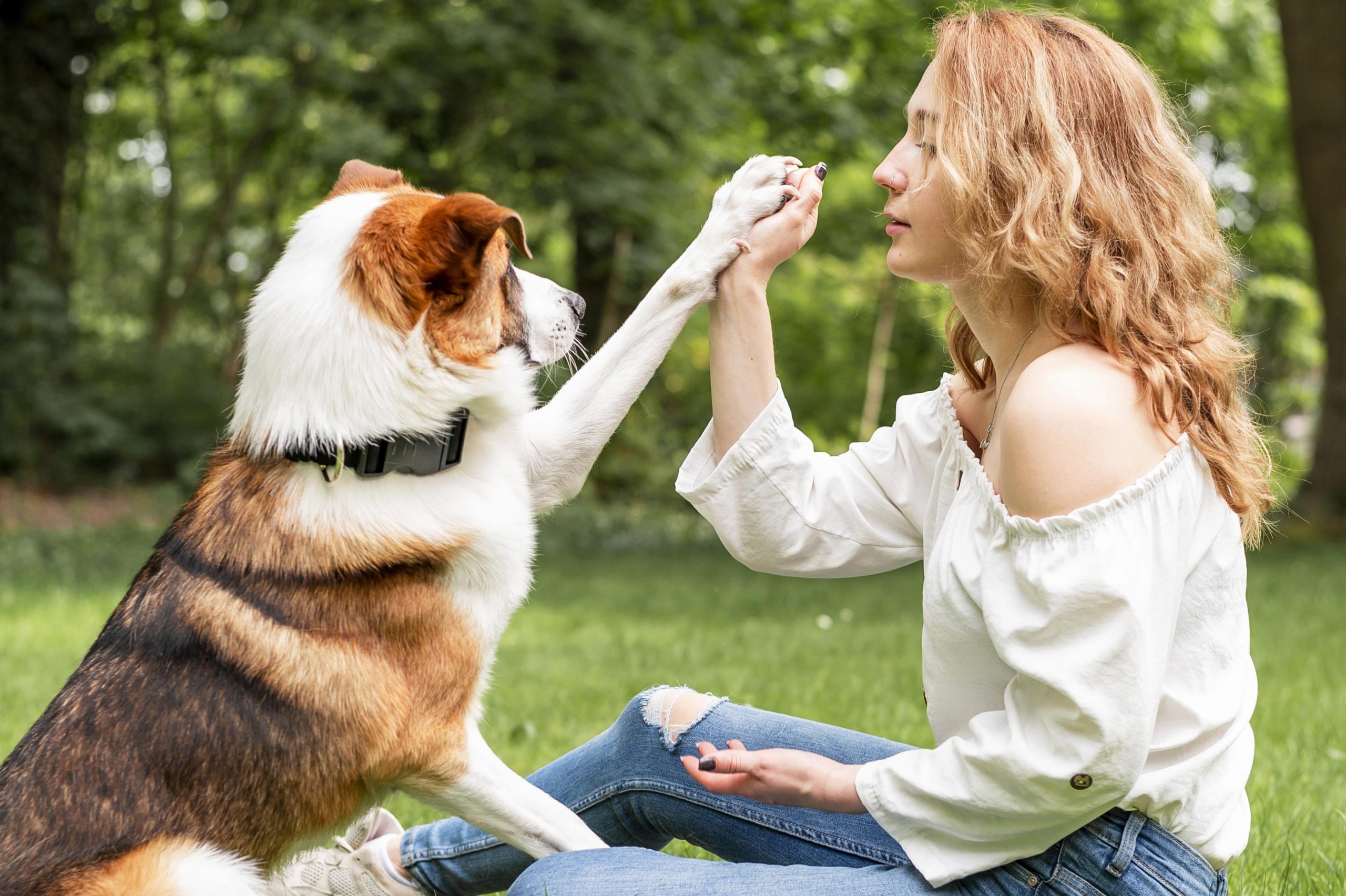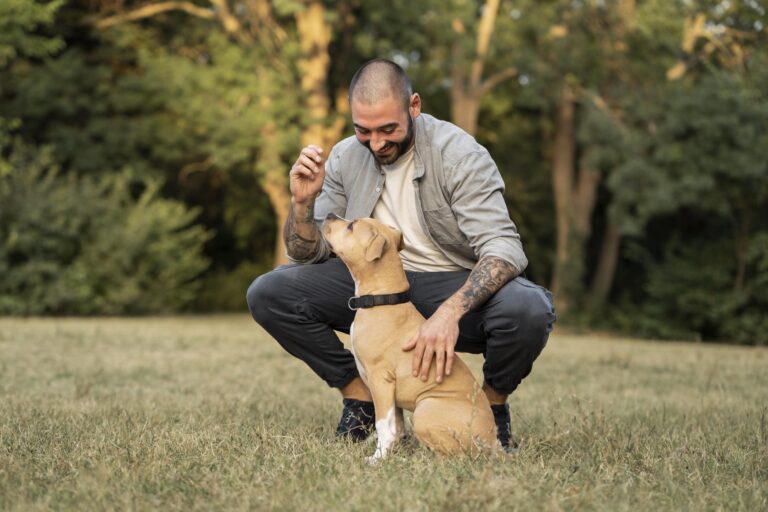How to Use Positive Interruptions Instead of Negative Corrections in Dog Training
Positive Interruptions in Dog Training offer a powerful and humane alternative to negative corrections. Instead of punishing unwanted behaviors, positive interruptions redirect your dog’s attention and encourage better choices. This method builds trust, keeps training sessions upbeat, and helps dogs learn faster without fear or confusion. In this guide, we’ll explain how to use positive interruptions effectively and why they are a valuable tool for creating lasting obedience and confidence.
Historically, dog training often relied on punitive measures, yet recent statistics show that positive reinforcement yields faster, more enduring results. By interrupting undesirable behavior with a positive command, dogs are more likely to respond favorably. This method encourages learning without fear, creating cooperative and confident canine companions.
- Recognize the right moments to use positive interruptions.
- Use clear, consistent commands to redirect your dog’s behavior.
- Reward your dog with treats or praise for following commands.
- Monitor and adjust your approach based on your dog’s reactions.
- Practice regularly to reinforce desired behaviors naturally.
How to Use Positive Interruptions Instead of Negative Corrections in Dog Training
Positive interruptions focus on encouraging desirable behaviors rather than punishing the bad ones. When your dog is about to do something undesirable, you can use a positive command to redirect its focus. Common commands include “sit,” “stay,” or “come.” By giving your dog something positive to do, you interrupt the undesired behavior without causing stress or fear. This approach helps build a stronger bond between you and your pet.
To effectively employ positive interruptions, it’s crucial to recognize the right moments. These moments typically occur when your dog is about to engage in unwanted behavior like barking, jumping, or chewing on things. Promptly use a positive command to interrupt and redirect your dog. Consistency is key so your dog knows what to expect. This predictable pattern aids in quicker learning.
Scenario Positive Command Barking at Visitors “Sit” Jumping on Furniture “Off” Chewing on Shoes “Drop it”
Positive interruptions not only lessen stress for your dog but also for you. By focusing on what your dog should do, you create a more peaceful training environment. This method proves effective long-term, resulting in a happier pet. Over time, your dog will learn to offer these positive behaviors on its own. This leads to a harmonious home.
Step #1: Understanding Positive Interruptions
Positive interruptions are about guiding your dog’s behavior without using negative reinforcement. Instead of punishment, this method uses commands to redirect your dog towards positive actions. The goal is to reduce unwanted behavior by introducing a new task. This approach fosters a safer and more respectful training environment. It builds trust between the pet and owner.
Learning about positive interruptions involves understanding the difference from traditional corrections. Traditional methods might rely on scolding or physical corrections. On the other hand, positive interruptions involve using praise and rewards. It’s important to catch the undesired behavior early. This ensures the positive command is timely and effective.
- Use clear commands like “sit” or “come.”
- Employ treats or toys as positive reinforcement.
- Maintain consistency in using interruptions.
- Observe your dog’s reactions and adjust accordingly.
- Keep training sessions short and engaging.
Using positive interruptions correctly requires patience and practice. Always watch your dog closely to identify the exact moments when they need redirection. Celebrating their good behavior makes the learning process enjoyable. Over time, your dog will learn to anticipate your commands. This will result in improved behavior and a happier pet.
Step #2: Identifying Opportunities for Positive Interruptions
Recognizing when to use positive interruptions is crucial for effective dog training. These opportunities arise whenever your dog starts to showcase unwanted behavior. Monitoring your dog’s behavior closely helps you spot these moments quickly. For instance, if your dog starts barking excessively, you can redirect its focus. Consistent practice will make it easier to identify these opportunities.
Behavior Interruption Command Pulling on the leash “Heel” Jumping on people “Sit” Begging for food “Go to your spot”
It’s also vital to understand the triggers causing the undesired behaviors. Sometimes, dogs act out due to boredom, anxiety, or lack of proper training. Knowing these triggers can help you prepare in advance. By being proactive, you can implement positive interruptions even before the behavior starts. This can significantly improve the training process.
- Keep a close watch on your dog’s body language.
- Be ready with your positive commands.
- Use high-value treats for strong distractions.
- Train consistently to reinforce good behavior.
- Adjust your strategy based on your dog’s progress.
Step #3: Implementing Positive Interruptions in Daily Training
Implementing positive interruptions in daily training requires consistency and patience. Start by using clear commands that your dog can easily understand. For example, if your dog starts barking at the doorbell, quickly redirect with commands like “sit” or “quiet.” Pair these commands with rewards such as treats or praise. This will encourage your dog to follow the desired behavior.
- Set a regular training schedule.
- Use short, frequent sessions to maintain your dog’s interest.
- Incorporate positive interruptions throughout the day, not just during training.
- Be patient and give your dog time to learn.
- Adjust your techniques based on your dog’s responses.
Next, integrate positive interruptions into everyday situations. During a walk, if your dog pulls on the leash, use a command like “heel” to bring them back to your side. Repeat this whenever necessary to reinforce good walking behavior. This makes your walks more enjoyable and stress-free. Over time, your dog will learn to follow your lead.
At home, find opportunities to practice positive interruptions as part of your routine. Use commands before meals, playtime, and bedtime to instill good manners. For instance, before giving your dog its meal, ask for a “sit.” This promotes discipline and reinforces positive behavior. The more you practice, the more natural it becomes for your dog.
Tracking your dog’s progress can help fine-tune your approach. Keep a journal or notes on which commands work best and in what situations. This record can guide adjustments to your training strategy. It also helps you identify patterns in your dog’s behavior. With careful observation, you can achieve lasting results.
Step #4: Monitoring the Impact on Your Dog’s Behavior
After implementing positive interruptions, it’s essential to monitor your dog’s progress regularly. Start by observing changes in your dog’s reactions to common triggers. Take note if your dog responds positively to commands more frequently. This can indicate your training’s effectiveness. Adjust your techniques based on these observations.
Consider keeping a behavior log to track your dog’s development. Note the date, incident, and your dog’s response to the positive interruptions.
- Behavior observed
- Command given
- Dog’s response
- Effectiveness of the interruption
Such detailed records can help you spot patterns over time. This insight allows for targeted improvements in your training strategy.
Feedback is also crucial. If you live with family members, ensure they report any noticeable changes in the dog’s behavior. Their observations can offer a more comprehensive view of the dog’s progress. Consistent communication about what’s working and what’s not will be beneficial. It ensures everyone is on the same page.
Evaluate the emotional well-being of your dog alongside behavioral changes. A stressed or anxious dog might need a different approach or more time to adapt. Assess if your dog appears more relaxed and happier. An improved demeanor can be a clear sign that positive interruptions are working. Always prioritize your dog’s overall well-being throughout the training process.
Regularly reviewing and celebrating milestones can sustain motivation for both you and your dog. Recognize small victories like fewer barking episodes or better leash manners. These successes build a strong foundation for future training. Positive reinforcement isn’t just for your dog; it helps keep you committed to the process as well. Staying dedicated is key to achieving long-term success.
Benefits of Positive Interruptions Over Negative Corrections
Positive interruptions in dog training offer numerous advantages over traditional negative corrections. One significant benefit is that they foster a more trusting relationship between you and your dog. Your pet feels secure knowing that its good behavior is rewarded rather than punished. This method reduces stress and anxiety in dogs, making training sessions more pleasant. Happy dogs are generally easier to train.
Consistency in using positive interruptions leads to more reliable behavior from your dog. Positive reinforcement encourages dogs to repeat desirable actions. It’s easier for them to understand what is expected. This makes the learning process faster and more efficient. Dogs are more likely to remember and follow commands.
The approach also leads to long-term behavioral improvements. Dogs trained with positive interruptions tend to exhibit less fear and aggression. They are more relaxed and willing to learn. Their overall well-being improves, which can reduce the likelihood of behavioral issues in the future. This creates a more harmonious living environment.
Positive interruptions are also flexible and adaptable. You can use them in various situations, both at home and in public. This universal application helps in better managing your dog’s behavior consistently. It also allows other family members to participate in training, fostering a collective effort. This multiplies the effectiveness of your training program.
- Fosters trust and reduces stress.
- Leads to quicker learning.
- Encourages long-term behavioral improvements.
- Flexible and adaptable to different scenarios.
- Involves the whole family in training.
Finally, positive interruptions make training a fun and engaging activity. Rewards and praise keep your dog motivated. This makes the process enjoyable for both the dog and the owner. Positive interactions turn training sessions into bonding experiences. This strengthens the overall relationship and ensures training success.
Frequently Asked Questions
Discover common questions and insightful answers about using positive interruptions in dog training. These responses aim to enhance your understanding and improve your training techniques.
1. What are positive interruptions in dog training?
Positive interruptions are a method used to redirect a dog’s attention from undesired behavior towards a positive action. Instead of punishing the dog, a command like “sit” or “stay” is given, followed by praise or a treat.
This approach helps reinforce good behavior, making the training process more enjoyable for both the dog and the owner. Positive interruptions create a stress-free environment, promoting quicker learning and stronger bonds.
2. Why should I use positive interruptions instead of negative corrections?
Positive interruptions are preferred because they reduce fear and anxiety in dogs. By focusing on rewarding good behavior, dogs are more likely to respond positively and learn faster.
Negative corrections can harm the bond between you and your dog, leading to stress and inconsistent behavior. Positive interruptions ensure a more cooperative and happy dog.
3. How do I identify the right moments for positive interruptions?
Identifying the right moments involves closely observing your dog’s behavior. Look for signs they might engage in unwanted actions, like barking or jumping.
Redirect their focus with a positive command before the behavior escalates. Consistent practice will help you recognize these moments more easily over time.
4. Can positive interruptions be used for all types of unwanted behaviors?
Yes, positive interruptions can be applied to a wide range of behaviors, from excessive barking to leash pulling. The key is to use commands that divert attention and provide clear guidance.
Adapt the commands to suit different scenarios, ensuring they are simple and consistent. This adaptability makes positive interruptions a versatile tool in dog training.
5. How do positive interruptions improve the overall well-being of my dog?
Positive interruptions create a more relaxed and happy environment for your dog. They reduce stress and encourage a sense of security, making your dog more willing to engage in training.
Over time, this method leads to improved behavior, stronger bonds, and a more enjoyable experience for both owner and pet. A happy dog is a well-behaved dog.
Understanding Negative and Positive Punishment

Conclusion
Incorporating positive interruptions in dog training offers a balanced and humane approach to behavior correction. By focusing on rewarding good behaviors rather than punishing bad ones, dogs learn more quickly and trust grows stronger. This method is not only effective but also fosters a positive, stress-free environment for both pet and owner.
The benefits of positive interruptions are manifold, ranging from faster learning to a happier, well-adjusted dog. Experts and new trainers alike can implement these techniques to see marked improvements. As a result, the bond between dog and owner will thrive, creating a harmonious and mutually respectful relationship.








